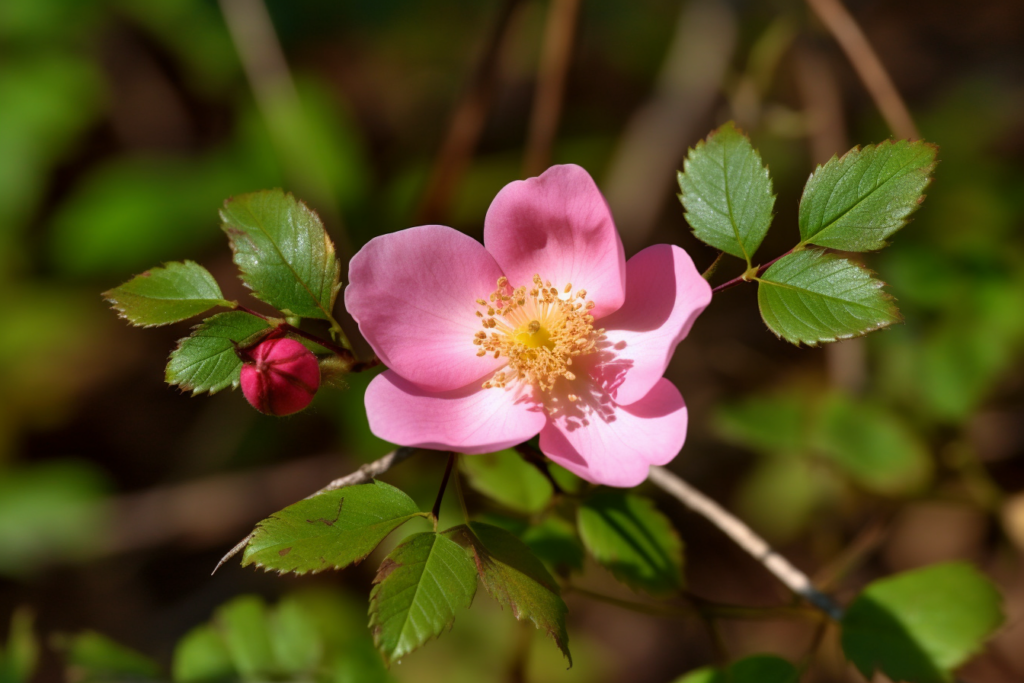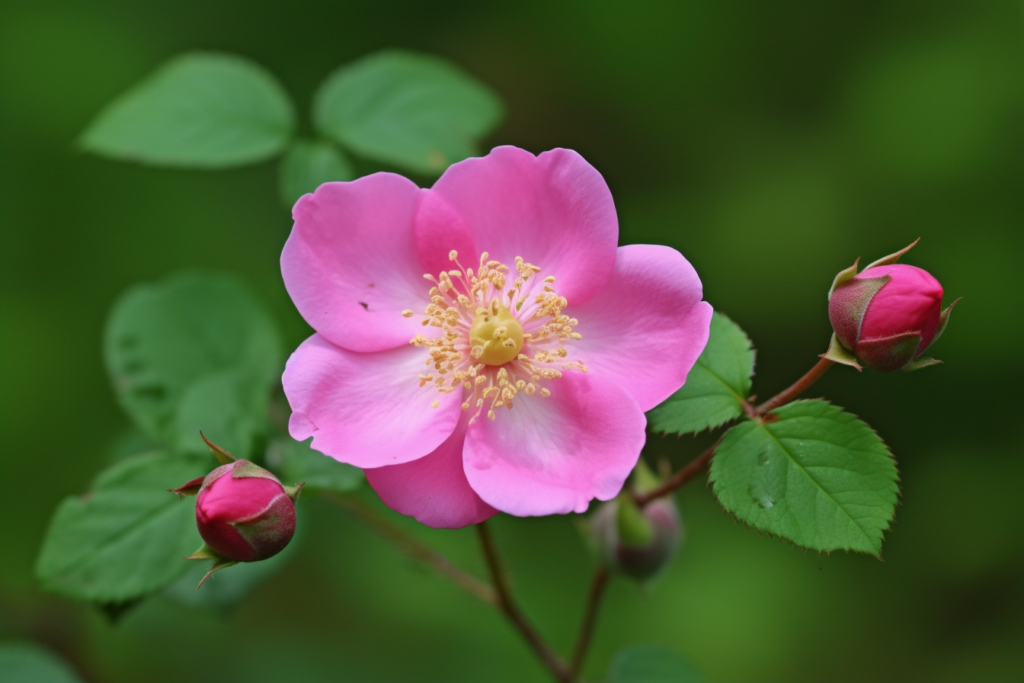Welcome to the world of briar roses! Briar rose, also known as Rosa rubiginosa, is a beautiful and hardy shrub that makes an excellent choice for any garden. With its delicate pink blossoms and strong thorns, it’s sure to make a statement in your landscape. Whether you’re looking for something to fill out a border or need a low-maintenance flowering shrub, this rose has plenty to offer. Read on to learn more about planting and caring for the briar rose, as well as some of its many uses and benefits.
Overview of Briar Rose
You may be familiar with this delightful species, but let’s take a closer look at it. Briar Rose or Rosa rubiginosa is an upright shrub that can reach heights of up to 8 feet tall and 4 feet wide. It produces fragrant pink and white flowers in the spring, followed by bright red rose hips in the late summer. The foliage is a deep green colour with small thorns throughout its stems. This species of rose is extremely hardy, making it ideal for use as a garden hedge or in natural landscapes. It can tolerate both sun and partial shade, however full sun exposure will result in more vibrant blooms. Briar Rose requires minimal maintenance once established and can thrive in most soil types provided they are well-draining and not overly moist.

Planting and Care
Planting and caring for this stunning flower is easy and rewarding! Briar Rose (Rosa Rubiginosa) thrives in a sunny or partially shaded spot with well-draining soil. To ensure success, make sure to water the rose deeply at least once every week. Fertilize it twice a month during its growing season to promote healthy growth. Pruning should be done after the flowering season is finished. Cut back any dead branches and shape the plant into desired form. Regularly check on your Briar Rose and remove any weeds that may have taken over its bed of soil. This will help ensure optimal growth of the plant as well as keep away pests or disease from taking hold of your beautiful flower.
Landscaping Ideas
Landscaping with this elegant flower is an easy way to bring life and beauty to any outdoor space. Briar rose makes a stunning addition to any garden, as it can be used for borders, hedges, or even mass plantings. It’s also a great choice for container gardens or window boxes due to its ability to thrive in smaller spaces. The deep red hue of the flowers stand out against other plants in the landscape, making them perfect for adding pops of colour. Planting briar roses in clusters or rows creates a beautiful look that will last all season long. For additional interest, pair them with contrasting hues like white blooms or lush green foliage. With minimal maintenance and plenty of sun exposure, you can create a beautiful landscape design featuring these stunning roses!

Types of Briar Roses
Discovering the different types of briar roses available can help you create a stunning landscape design for your outdoor space. Known scientifically as Rosa rubiginosa, briar roses come in several varieties ranging from shrub to vine-like plants. The most common type is the upright shrub rose, which grows up to 8 feet tall and produces single or double blooms in shades of pink, red, white or yellow. This variety is hardy and drought-tolerant, making it an ideal choice for large gardens or borders. Another popular option is the trailing wild rose with its arching branches and small clusters of flowers that bloom throughout the summer months. These cascading plants are often found growing along walls or fences and make great additions to rockeries and hanging baskets. Lastly, there’s the rambling climbing rose which thrives in sunnier spots; this type grows vigorously up trellises, arches and obelisks producing beautifully scented flowers throughout late spring. With so many options when it comes to briar roses you’re sure to find one that fits perfectly into your garden design!
Uses and Benefits
Bringing these stunning blooms into your garden can be a rewarding experience, adding beauty and fragrance to your outdoor space. Briar roses (Rosa rubiginosa) are highly versatile plants that come with a range of uses and benefits. Not only do they make beautiful ornamental plants for landscaping, but they can also provide an abundance of edible fruit and foliage. The fruits produced by the briar rose have many culinary applications, such as jams, jellies, syrups, wines, and even tea infusions. Additionally, these fruits are packed with essential vitamins and minerals that can provide health benefits when consumed regularly.
The foliage of the briar rose is also incredibly useful for making herbal remedies. The leaves contain tannins which can help reduce inflammation throughout the body, while the petals contain antioxidants that may help protect against cellular damage caused by free radicals in our environment. Briar roses are also known to attract beneficial insects like bees to your garden – helping promote healthy pollination throughout your landscape!

Diseases and Pests
Moving on from the uses and benefits of Briar Rose, it’s important to know what diseases and pests can affect this plant. Unfortunately, there are a few that can cause issues with Briar Rose if not taken care of properly. You’ll want to be sure you monitor your plants for any signs of these afflictions in order to protect them.
One issue that affects Briar Rose is powdery mildew, which is a type of fungal disease. It’s recognizable by its white or greyish patches that tend to form on the leaves and stems of affected plants. To prevent this from occurring, you should make sure your rose gets plenty of sunlight and good air circulation around it. Additionally, you may need to use an appropriate fungicide to keep powdery mildew away from your plant.
Another potential problem for Briar Rose is pests including aphids, mites, thrips and caterpillars. These pests can damage the foliage as well as introduce diseases into the plant through their feeding activities. If you see any signs of these insects present on your rose bush, it’s important to treat it immediately with insecticides or natural pest control solutions like neem oil or horticultural soap spray.
Conclusion
You’ve learned a lot about briar rose. Planting and caring for it is easy, and you have plenty of landscaping ideas to choose from. Not only that, but there are various types to choose from, each with its own unique benefits. Although this plant can be susceptible to certain diseases and pests, proper care can help prevent any issues. With these tips in mind, you’re sure to enjoy the beauty of this flowering shrub in your garden for years to come!
Sam loves to learn about animals and their habitats. He has been a nature lover from a very young age, and has been writing papers and articles about wildlife for as long as he can remember.
